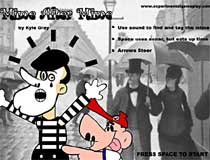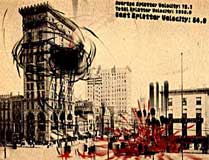The Experimental Gameplay Project, initiated by graduates of Carnegie Mellon’s Entertainment Technology Center, has turned a video-game design experiment into a creative approach for pros and amateurs.
Their method of intensive learning-by-doing forced them to quickly devise and test, without wasting time preplanning what would be engaging interactive games. “The idea of making small games is the best way to learn game design,” says Eric Zimmerman. “The idea of the small sketch is especially germane to games because it’s important to explore a range of approaches quickly and learn from your own mistakes.”


Students are “pushing to make games that will make people think, ‘You can make a game about that?'” says Shane Liesegang. Tower of Goo, requires players to construct a skyscraper-like structure made of oozy, gravity-sensitive glop. In Mime After Mime, players chase Marcel Marceau-like characters only using sound (the mimes just flash briefly on-screen.)
I like the aesthetics of Attack of the Killer Swarm. Drag a mouse across the sepia-toned cityscape, and the black cloud turns into a swarm of hungry, airborne creatures that obey and follow the mouse. When the swarm encounters the tiny figures crossing the street, it obliterates them into bloody messes that look like an Abstract Expressionist painter’s splatters.
The titles won’t appear on the market. “This project isn’t about the final games,” says Kyle Gabler. “It’s about the creative process.”
Zimmerman believes that models like the EGP could be applied to commercial game design. “When you look at other design industries, like architecture and industrial design, research and experimentation are encouraged,” he observes. “But in the gaming industry, there’s a sense that we’re in a creative crisis.”
Via Business Week. Slide show.
